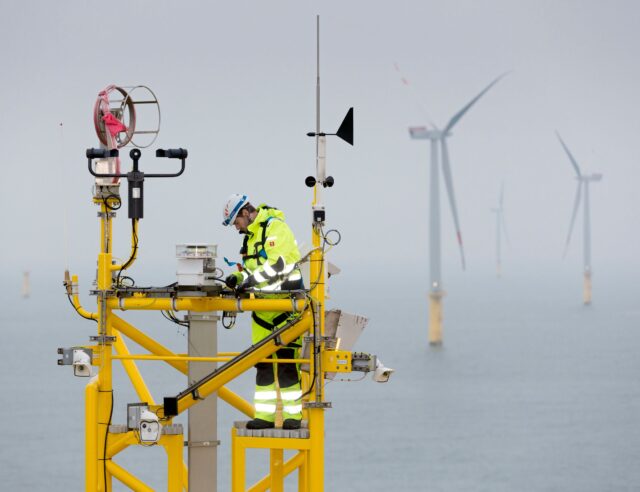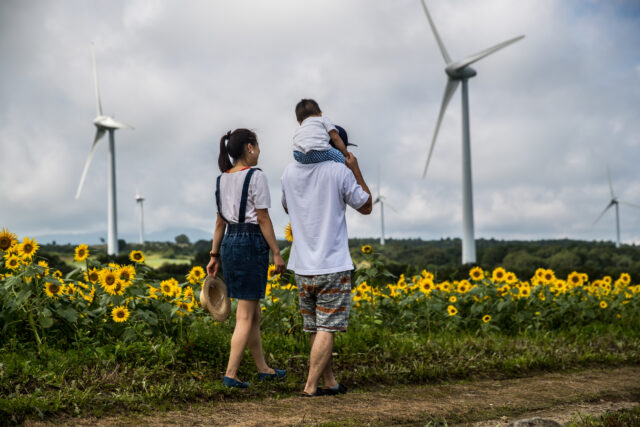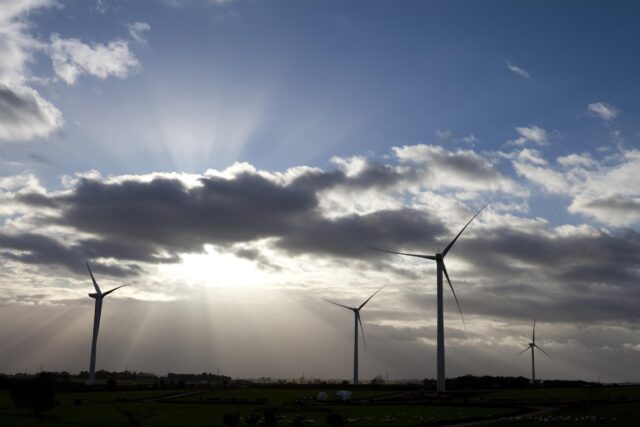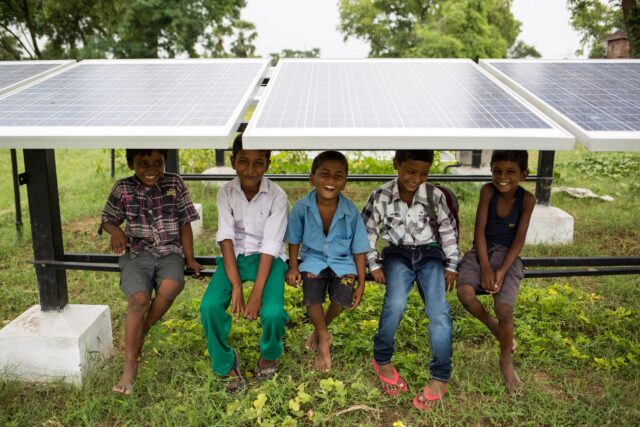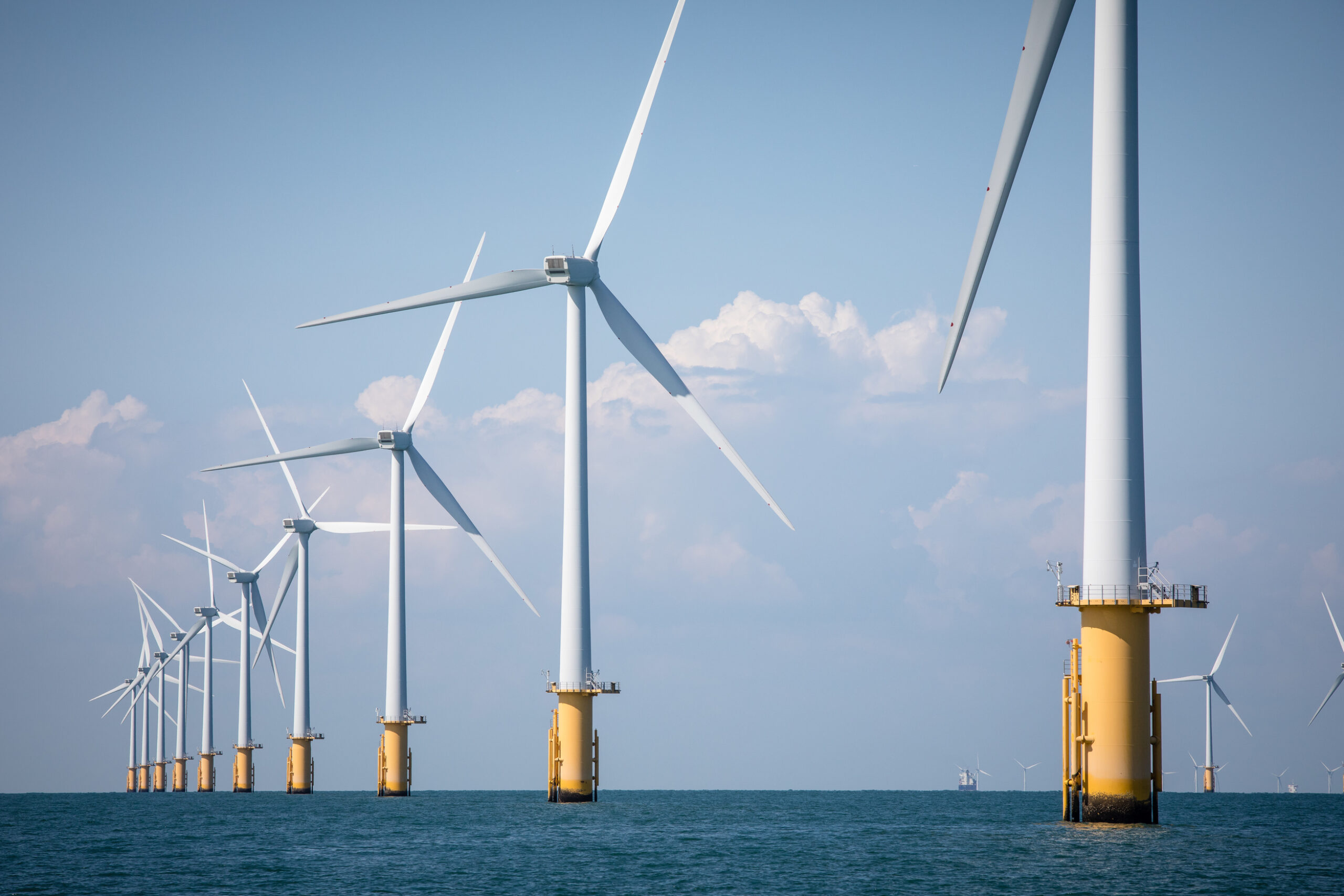
Wind energy
Wind power is produced using wind turbines on land or at sea. In the UK, both onshore and offshore windfarms offer cheap and plentiful clean, renewable energy.
Wind power harnesses energy from the movement of air through wind turbines, either on land or out at sea. For a country like the UK, windfarms offer a plentiful alternative to electricity generated by burning fossil fuels.
What is wind energy?
Wind power is energy generated from the wind using wind turbines – blades arranged in a fan-like shape at the top of a tall tower. Harnessing energy from the wind is not new technology; in fact, it could even be thousands of years old.
Today, there are two kinds of windfarms: onshore and offshore.
- Offshore wind refers to wind turbines placed in clusters out at sea.
- Onshore wind refers to wind turbines placed in groups on land.
How do wind turbines work?
- When the propeller-like blades of a wind turbine are hit by the wind, they act like airplane wings causing lift. They spin around the central axis and create mechanical energy from the movement of air.
- The turbine blades spin a rotor inside the central shaft of the turbine.
- Machinery inside the turbine next to the rotor converts the mechanical energy into electrical energy (electricity) using a magnetic field around an electrical coil, sometimes via a gearbox.
Wind energy pros and cons
Pros:
- Wind energy is clean – there’s no air or water pollution from producing power.
- Wind has among the lowest carbon emissions of any form of energy.
- Wind power is renewable and will never run out.
- Once installed, the energy from wind is very low cost.
- Onshore wind especially is the cheapest source of electricity in the UK, and offshore wind has dropped massively in cost and is a close rival.
- Wind turbines work almost anywhere – Greenpeace activists set one up on a moving oil platform to power their protest!
- They are quick and easy to construct.
Cons:
- They need a lot of space. But onshore windfarms can also be built on farms that can keep growing crops or grazing animals around them. And they can be built out at sea.
- Windfarms need to be designed and placed carefully to avoid harming birds and other wildlife. (But more birds are killed by cats, buildings and fossil fuel plants than wind turbines).
- The wind doesn’t always blow – but installing electricity storage and upgrading the grid to allow more connections with other countries in Europe will help with this.
Manufacturing and recycling wind turbines
Manufacturing wind turbines does require energy. But a typical wind turbine will offset this by the clean renewable energy it produces in less than six months. It will then generate emission-free electricity for the remainder of its lifespan, which is around 20–30 years.
Around 85% of a wind turbine is made from recyclable materials. But the blades are made from a few different materials blended together, so they can withstand all weather.
Siemens and other companies are deploying recyclable turbine blades, and indeed the industry is Europe has called for a ban on landfilling by 2025 to accelerate the trend.
Companies are also working on ways to recycle blades that have reached the end of their useful life as turbine blades. Using the materials to make cement reduces CO2 emissions by over a quarter. They are also recycled into bridges, unique outdoor furniture and artwork.
Wind power in the UK
The UK has the largest offshore windfarm in the world, and a strong offshore wind industry. Other countries are now building windfarms at speed, and the UK government needs to keep going to maintain stay competitive, and to meet the UK’s climate targets.
But the UK government is currently stopping new onshore windfarms from being built in England. Most windfarms on land are in Scotland.
Both offshore and onshore wind are now very cheap if they’re in the right location – far cheaper than fossil fuels.
It’s now known to be cheaper to build onshore wind than to use gas to run power plants. This is even including the costs of managing the variability of wind, and before the cost of the carbon emissions are counted.
How wind power will help the UK meet its climate targets
All climate projections for how the UK can meet its net zero targets involve building a lot more wind power – both onshore and offshore.
If we don’t build a lot of wind, we will have almost no hope of meeting our climate commitments.
Wind power is popular in the UK, and far more reliable than most people think
In a 2023 UK government survey, 83% and 78% of people say they support onshore and offshore wind respectively. Even onshore wind, which has had some negative attention in politics and the media, has far more supporters than opponents (including among people who live in the countryside).
It’s also much more reliable than most people think. The wind will provide power on some level about 98% of the time. Here’s how we can still get electricity from the wind, even when it doesn’t blow. It can be used in combination with other renewables, within an upgraded grid and better energy storage.
In sum, wind power is popular in the UK, and an effective alternative to fossil fuels for generating electricity. There is no good reason not to be installing a lot more of it.
